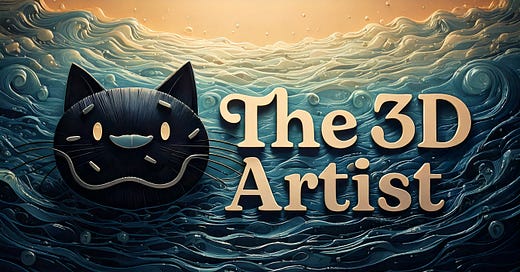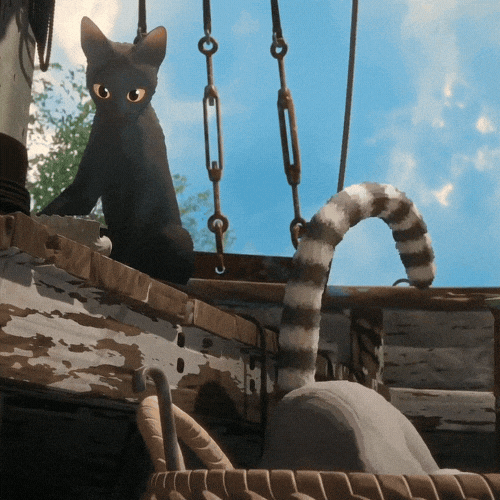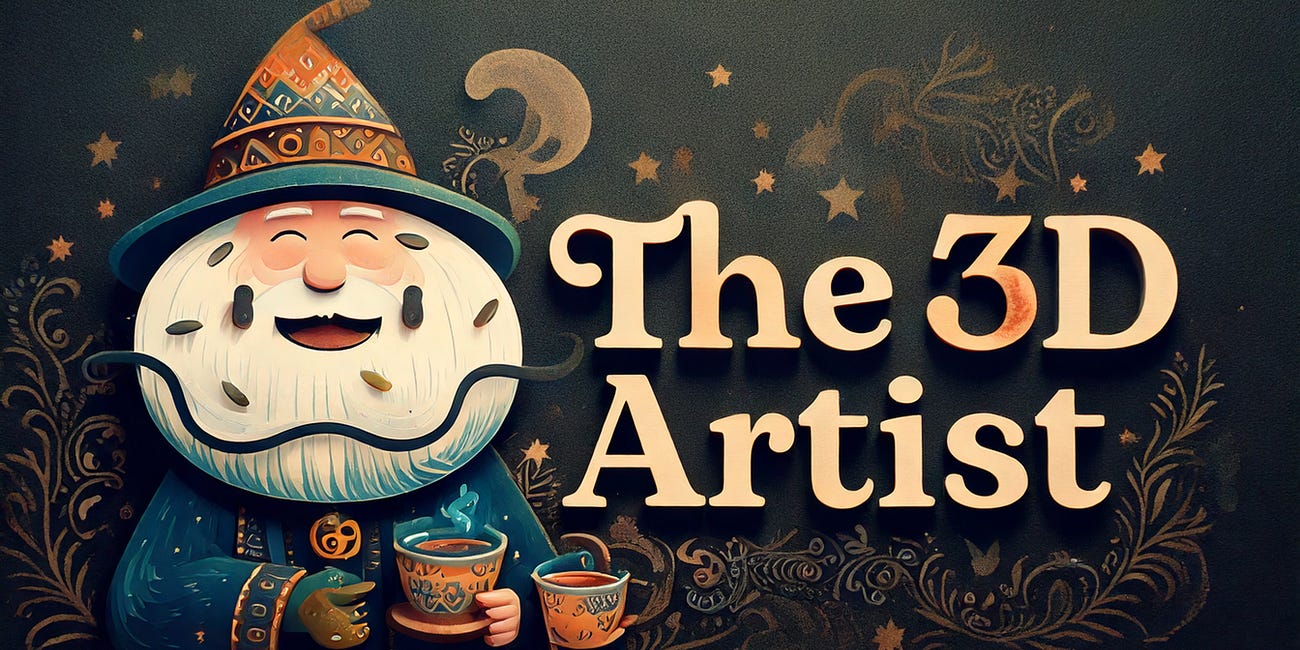How Flow Beat the Giants: The Rise of Small-Crew Animation
Blender didn’t win the Oscar—vision, efficiency, and storytelling did. Here’s why that matters.
The 2025 Academy Awards had some tough competition in the Best Animated Feature category. Heavyweights like The Wild Robot and Inside Out 2 were in the mix, both of which were masterfully crafted and critically acclaimed. Yet, it was Flow, a film made in Blender, that took home the Oscar.
I was beyond thrilled when Flow won. I’ve watched the film multiple times and have told everyone I know that they need to see it. It’s a breathtaking piece of storytelling with stunning visuals and deep emotional weight. And let’s talk about that capybara—what a legend. If there were an Oscar for Best Supporting Actor in an animated film, that capybara should have taken it home. The way he stood by Cat, unwavering and dependable, was downright inspiring. We should all be so lucky to have a friend that solid.
For the animation community, this was a monumental moment. Blender, the scrappy, open-source underdog that has spent most of its lifetime as a free alternative to costly industry standards, had finally arrived at the pinnacle of animation accolades. For years, it was known for its unconventional UI, its passionate user base, and, most importantly, its accessibility. But over time, Blender has grown. Its tools have improved, its community has strengthened, and now, with Flow, it has helped bring down the Goliaths of Pixar and DreamWorks.
But if you see Flow’s victory purely as a technical triumph, you’re missing the bigger picture.
The Conversation with Gints Zilbalodis
EJ Hassenfratz from the School of Motion recently interviewed Flow’s director, Latvian filmmaker Gints Zilbalodis, on the School of Motion podcast. If you’re not familiar with it, this podcast is a must-listen for creatives, with hosts like EJ and Joey Korenman bringing deep insights and engaging conversations to every episode.
During the interview, EJ naturally asked about Blender, perhaps expecting a celebratory take on its role in the film’s success. While Zilbalodis recognized its importance, he remained surprisingly neutral about it. To him, Blender was simply a tool—a means to bring his vision to life. He spoke about it in the same way any artist would discuss their medium, acknowledging both its strengths and challenges. Instead of seeing Blender’s real-time renderer as a constraint, he viewed it as an asset, perfectly suited to the story he wanted to tell.
And that is the key lesson here: the software is secondary to the vision.
The Real Reasons Flow Stands Out
There’s a tendency in animation and VFX to focus too much on the tools. The truth is, Flow could have been made in any modern 3D software. Blender didn’t suddenly surpass Maya, 3ds Max, C4D, or Houdini overnight. They’re all fantastic tools, each capable of producing stunning work. What made Flow special had nothing to do with the software and everything to do with three crucial elements:
A Strong Visual Voice – Zilbalodis had a distinct vision for his film. Regardless of the software, his visual style was precise and deliberate. He sculpted light and animation values in ways that served his storytelling needs. The film’s aesthetic is often described as painterly and minimalist, making use of atmospheric lighting and stylized character movement to create an almost dreamlike experience. Many breakdowns highlight how Flow achieves its visual richness through a combination of Blender’s real-time rendering, carefully designed color palettes, and a strong emphasis on negative space. Lighters and animators have done this for decades just not in this specific style—it’s the artist, not the tool, that makes the magic happen.
Efficiency Through Clarity – Flow was made with a remarkably small crew—just over 20 artists handled the bulk of the creative work. For comparison, feature films from Pixar and DreamWorks typically employ hundreds of artists, with teams specializing in every aspect from modeling to lighting to animation. A film like Inside Out 2 or The Wild Robot likely had a crew size well into the hundreds, if not thousands, including support staff. The fact that Flow managed to deliver an Oscar-winning film with such a lean team speaks to the strength of its artistic direction and the ability of modern tools to empower smaller teams to achieve incredible results. That kind of efficiency is only possible when the vision is clear from the start. When you know exactly what you want to create, you don’t waste time second-guessing.
A Powerful, Unique Story – This is the foundation of everything. No matter the toolset, a compelling story is what truly resonates. If you think technical execution is the key to emotional impact, I challenge you to watch the Sleepytime episode of Bluey or the opening of Up—simple 2D animation and storyboards can still wreck you emotionally. (And yes, I may have teared up at the end of The Wild Robot—I cry in movies more than I thought!)
The Takeaway from Flow
The lesson here isn’t about Blender’s dominance; it’s about how modern tools enable artists to bring their visions to life with smaller teams and more creative freedom.
Have a vision. Craft a unique story. Use the tools at your disposal efficiently. Don’t get locked into one software—use whatever helps you tell the best story.
As I discussed in my previous article about the evolving VFX industry, this shift is already happening. The skeleton crew that won Best Visual Effects for Godzilla Minus One was the first step. Flow winning Best Animated Feature is the next.
The real question is: what comes next? And more importantly—why can’t it be you?
The 3D Artist Community Updates
Prepare to be inspired by the dynamic force that is EJ Hassenfratz—a multi-Emmy award-winning 3D artist, motion designer, and one of the creative masterminds behind The School of Motion.
EJ's journey into the world of animation began with a fascination for storytelling and a love for technology. His unique blend of artistic talent and technical expertise has allowed him to create mesmerizing 3D animations and visual effects that captivate audiences worldwide.
As a prominent figure in the 3D animation community, EJ is not only an accomplished artist but also a dedicated educator. He shares his knowledge and insights through workshops, tutorials, and speaking engagements across the globe, including the Seoul 100x Conference, NAB, Siggraph, Maxon Japan, and Adobe Video World. He always strives to inspire the next generation of 3D artists to explore their creativity and reach new heights.
Beyond his professional achievements, EJ is a self-proclaimed craft beer nerd and proud pug dad, infusing his vibrant personality into every project he undertakes.
Get ready to dive deep into the creative cosmos with the one and only EJ Hassenfratz!
3D Merch is here and we have a new hoodie!
3D News of the Week
‘Ne Zha 2’ Hits $2 Billion Milestone - Cartoon Brew
3D Artist Photographed Monk Pets to Create This Detailed Crocodile in Blender - 80.lv
Learn this clever hack to create CG smoke and fog effects on an iPad - Creative Bloq
Enabling Innovation: HUGO BOSS’ Training Approach To Digital Creation - The Interline
Artist Shows Off Their Procedurally Animated Lizard Evolution - 80.lv
3D Tutorial
3D Job Spreadsheet
Link to Google Doc With A TON of Jobs in Animation (not operated by me)
Hello! Michael Tanzillo here. I am the Head of Technical Artists with the Substance 3D Growth team at Adobe. Previously, I was a Senior Artist on animated films at Blue Sky Studios/Disney with credits including three Ice Age movies, two Rios, Peanuts, Ferdinand, Spies in Disguise, and Epic.
In addition to his work as an artist, I am the Co-Author of the book Lighting for Animation: The Visual Art of Storytelling and the Co-Founder of The Academy of Animated Art, an online school that has helped hundreds of artists around the world begin careers in Animation, Visual Effects, and Digital Imaging. I also created The 3D Artist Community on Skool and this newsletter.
www.michaeltanzillo.com
Free 3D Tutorials on the Michael Tanzillo YouTube Channel
Thanks for reading The 3D Artist! Subscribe for free to receive new posts and support my work. All views and opinions are my own!













